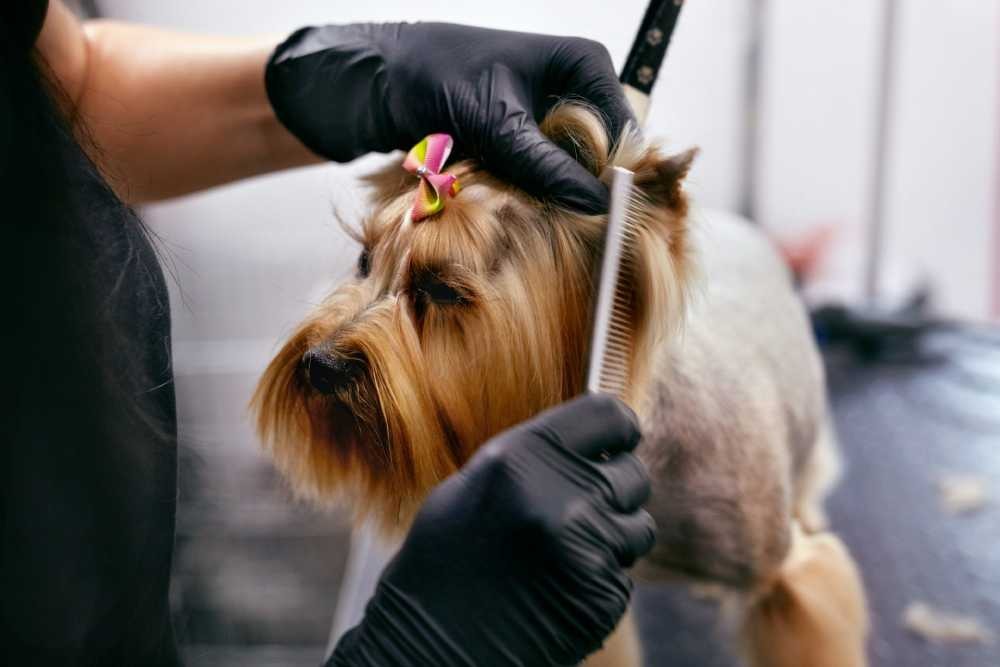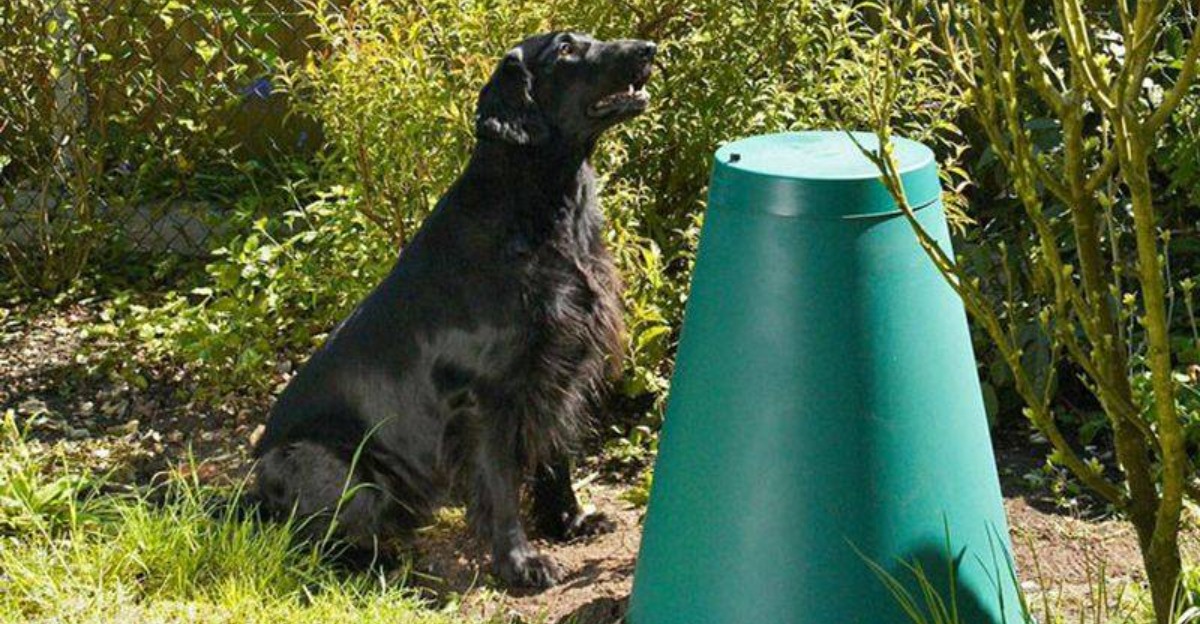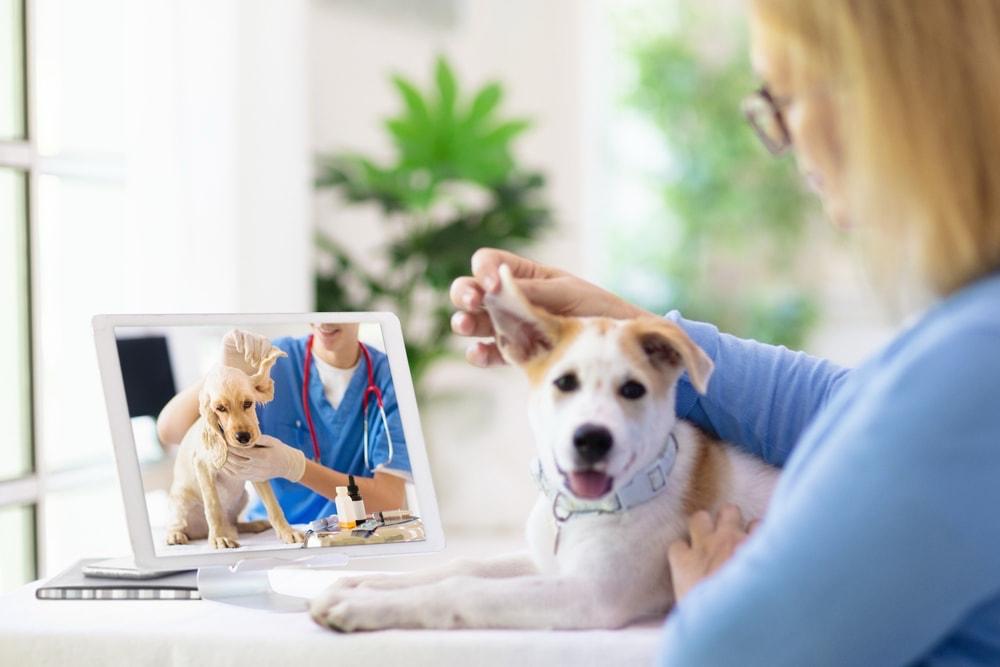
The ethics & welfare of pet grooming: what every owner should ensure,
"Ensuring the well-being of pets goes beyond aesthetics—ethical grooming encompasses hygiene, health, and emotional care, requiring informed choices, gentle handling, and breed-specific practices. From brushing and bathing to nail trimming and coat maintenance, every aspect must prioritize comfort and safety, helping owners foster trust, prevent disease, and strengthen the bond between pet and caregiver while avoiding unnecessary cosmetic procedures."
🐶 Pet Star
43 min read · 1, Oct 2025

Introduction
Pet grooming is often seen as a luxury or purely cosmetic activity, but in reality, it is an essential aspect of animal welfare. Grooming not only keeps pets looking neat and clean but also plays a crucial role in their physical health, psychological well-being, and social comfort. From bathing and brushing to nail trimming and coat styling, grooming encompasses a wide range of practices that can significantly influence an animal’s quality of life. However, grooming also raises ethical concerns—over-handling, unnecessary cosmetic modifications, and stressful procedures can harm pets if not done with care. This article explores the ethics and welfare considerations of pet grooming, providing pet owners with guidance on what they should ensure to protect their companions’ well-being.
The Importance of Grooming in Animal Welfare
1. Health Benefits
- Skin and Coat Health: Regular brushing removes dead hair, prevents mats, and distributes natural oils that keep skin healthy.
- Parasite Control: Grooming helps detect fleas, ticks, and skin infections early.
- Hygiene: Bathing reduces dirt, odors, and allergens that could cause discomfort.
- Nail Care: Trimming nails prevents painful overgrowth and mobility issues.
2. Psychological and Emotional Benefits
- Bonding: Grooming strengthens the human-animal bond when done gently.
- Comfort: A well-maintained coat prevents discomfort from tangles, mats, or excessive heat.
- Stress Reduction: Gentle grooming routines can relax pets, though improper handling may cause fear.
3. Preventive Care
Veterinarians often emphasize that grooming is preventive medicine. Detecting lumps, bumps, ear infections, or injuries during grooming ensures early intervention and treatment.
Ethical Concerns in Pet Grooming
1. Cosmetic vs. Welfare Grooming
Some grooming practices prioritize aesthetics over welfare, such as:
- Excessive hair dyeing with chemicals.
- Painful ear cropping or tail docking (though surgical, often linked to cosmetic grooming culture).
- Over-styling breeds in ways that cause discomfort (e.g., excessive coat shaving).
Ethically, pet owners must prioritize health and comfort rather than fashion.
2. Handling and Stress
- Pets may resist grooming due to fear, pain, or unfamiliarity.
- Forceful restraint or sedation without medical necessity can be harmful.
- Ethical grooming respects the animal’s tolerance, using positive reinforcement instead of punishment.
3. Over-bathing and Chemical Use
- Frequent use of shampoos, perfumes, or coat sprays can strip natural oils and irritate skin.
- Ethical grooming involves using safe, pet-friendly products at reasonable intervals.
4. Breed-Specific Issues
Certain breeds require specialized grooming (e.g., Poodles, Shih Tzus, Persian cats). Neglecting breed-specific care can cause severe matting, while excessive styling may compromise welfare. Owners should balance breed requirements with the animal’s comfort.
Best Practices for Ethical Pet Grooming
1. Choose the Right Groomer
- Verify certifications and training in animal handling.
- Observe grooming spaces for cleanliness, safety, and humane practices.
- Ask about handling techniques and stress management approaches.
2. Grooming at Home vs. Professional Grooming
- At Home: Builds trust and familiarity, good for basic care (brushing, bathing).
- Professional Grooming: Necessary for advanced care (clipping, styling, specialized coat maintenance).
- Ethical choice depends on the pet’s needs, owner’s skill, and stress levels of the pet.
3. Stress-Free Grooming Approaches
- Introduce grooming gradually (short sessions).
- Use treats, praise, and calm environments.
- Never rush or force grooming when the pet is distressed.
4. Safety and Comfort First
- Ensure tools are well-maintained and sanitized.
- Monitor water temperature, clipper heat, and handling techniques.
- Use protective gear (ear covers, paw balm) if necessary.
5. Frequency and Moderation
- Dogs: Bathing every 4–6 weeks depending on breed and lifestyle.
- Cats: Brushing more important than bathing (most cats self-clean).
- Exotic pets (rabbits, guinea pigs): Specialized grooming; over-bathing is dangerous.
Owner’s Responsibilities in Ethical Grooming
- Informed Decisions: Owners should educate themselves on breed needs and grooming risks.
- Health Checks: Schedule vet visits if grooming reveals abnormalities.
- Consent & Comfort: Always prioritize the pet’s emotional state during grooming.
- Avoiding Harm: Say no to unnecessary cosmetic grooming that could compromise welfare.
The Future of Ethical Grooming
- Technological Aids: Gentle grooming tools (silent clippers, self-cleaning brushes) are emerging.
- Training & Certification: More groomers are undergoing welfare-focused certifications.
- Shift in Attitudes: Growing awareness encourages owners to demand humane practices.
Ethical grooming is no longer just about aesthetics—it is about recognizing grooming as an essential component of responsible pet ownership.
Pet grooming is often misunderstood as a cosmetic luxury when in reality it is an essential practice of animal welfare, encompassing the physical, psychological, and social well-being of pets, and requiring a thoughtful ethical approach from owners and professionals alike. Grooming includes a range of practices such as brushing, bathing, trimming nails, cleaning ears, clipping coats, and even dental hygiene, each of which serves a deeper purpose than aesthetics—it directly impacts the pet’s comfort, health, and longevity. Regular brushing helps prevent painful matting and distributes natural oils for healthy skin, while bathing at proper intervals ensures hygiene and reduces allergens, nail trimming prevents injuries and skeletal discomfort, and thorough checks during grooming sessions allow for the early detection of lumps, parasites, infections, or wounds that could otherwise go unnoticed. Beyond the physical, grooming offers psychological and emotional benefits; when done gently, it strengthens the human-animal bond, provides relaxation, and instills a sense of comfort for the pet, but when done carelessly or with force, it can induce fear, stress, and mistrust. Here arises the crucial ethical concern: where does necessary grooming end and cosmetic indulgence begin? Many owners, influenced by trends, unknowingly prioritize fashion over welfare, subjecting pets to harmful dyes, excessive styling, or practices such as tail docking and ear cropping that compromise comfort and natural functioning. True ethical grooming should never prioritize aesthetics over well-being, and owners must always ask whether a grooming choice benefits their pet’s health or simply satisfies human vanity. Another ethical dilemma lies in handling and stress management—some groomers, due to time constraints or lack of training, may restrain or even sedate animals unnecessarily, which not only undermines trust but can physically harm the pet; instead, ethical grooming requires patience, positive reinforcement, gradual familiarization, and respect for the pet’s limits, even if that means multiple shorter sessions instead of one prolonged stressful experience. Similarly, the overuse of shampoos, sprays, and perfumes may appeal to human senses but can irritate sensitive skin and strip natural oils, proving that moderation and the use of pet-safe products are key to welfare-first grooming. Breed-specific care introduces another layer of responsibility—breeds like Poodles, Shih Tzus, or Persians require specialized maintenance, and neglecting their unique grooming needs leads to suffering, yet excessive styling, shaving, or trimming in ways that interfere with natural coat function is equally harmful. Owners bear the responsibility of educating themselves on their pet’s needs, balancing breed requirements with comfort, and ensuring professional groomers they choose are trained in welfare-focused handling, sanitation, and stress management. Choosing between at-home grooming and professional services should be guided by the pet’s temperament, the owner’s skill, and the complexity of required care, always keeping the pet’s comfort at the forefront. Ethical grooming also emphasizes safety—tools must be clean, sharp but not injurious, water must be at the right temperature, clipper blades should not overheat, and environments must be free from hazards or loud stress-inducing noises. Grooming frequency is another area of ethical consideration; while dogs may require baths every 4–6 weeks depending on breed and lifestyle, cats typically rely on self-cleaning and benefit more from regular brushing than bathing, and small animals such as rabbits or guinea pigs require highly specialized, minimal grooming since over-bathing can be life-threatening. Exotic pets such as reptiles or birds also present unique needs, highlighting the principle that one-size-fits-all grooming approaches are not ethical. Owners should see grooming as a component of preventive care and part of responsible ownership, rather than an occasional indulgence. As awareness of animal welfare grows, the grooming industry itself is evolving—technology has introduced quieter clippers, self-cleaning brushes, and gentler products, while certification programs emphasize humane handling and stress reduction techniques. In the future, ethical grooming will likely become the standard, with owners demanding transparency and professionals held accountable for welfare-first practices. Ultimately, grooming is not about making pets look appealing to humans but about ensuring they are clean, comfortable, and healthy; therefore, owners must recognize grooming as a medical and emotional necessity, not a fashion show. The summary of these considerations is clear: grooming, when guided by ethics, ensures skin and coat health, prevents disease, strengthens the bond between owner and pet, and reduces stress, but when driven by vanity or negligence, it risks causing pain, fear, or long-term harm. The conclusion is simple yet vital—grooming is a responsibility, not an option, and the welfare of the animal should always outweigh any aesthetic desire of the owner. Pet owners should avoid unnecessary cosmetic treatments, prioritize humane handling, select trained professionals, and most importantly, respect the individuality and comfort levels of their pets. By doing so, grooming becomes an act of care and compassion rather than a superficial obligation, aligning with the ethical principles of responsible pet ownership.
Pet grooming is not merely a cosmetic practice but an essential component of responsible pet ownership that directly impacts the physical, psychological, and emotional welfare of animals, encompassing activities such as bathing, brushing, nail trimming, ear cleaning, dental care, and coat clipping, each of which plays a critical role in ensuring a pet's health and comfort while simultaneously strengthening the bond between pet and owner; regular grooming helps maintain skin and coat health by removing dead hair, preventing painful mats, distributing natural oils, and reducing the risk of skin infections, while bathing at appropriate intervals ensures hygiene, reduces allergens, and eliminates odors, nail trimming prevents discomfort and skeletal problems associated with overgrown nails, and routine grooming sessions allow for the early detection of lumps, bumps, parasites, or injuries, enabling timely veterinary intervention and preventive care, which is far more effective than treating advanced conditions. Beyond physical health, grooming also contributes to the psychological and emotional well-being of pets, as gentle and positive handling during grooming can reduce stress, build trust, and foster a sense of security, yet improper or forceful grooming techniques, prolonged restraint, or excessive use of sedation can lead to fear, anxiety, and behavioral problems, highlighting the ethical responsibility of owners and professionals to approach grooming with patience, empathy, and a deep understanding of the animal’s tolerance levels. Ethical grooming also involves distinguishing between practices that prioritize welfare and those that prioritize aesthetics; while some cosmetic procedures such as hair dyeing, excessive styling, tail docking, or ear cropping may appeal to human preferences, they can compromise the natural functioning, comfort, and dignity of the animal and are widely criticized from a welfare standpoint, emphasizing that grooming decisions should always prioritize health, safety, and comfort over superficial appearance. Stress management during grooming is a crucial consideration, as animals may resist handling due to fear, pain, or unfamiliarity, and ethical grooming requires gradual familiarization, positive reinforcement, and the ability to recognize signs of distress, ensuring that sessions are conducted in a calm environment and interrupted if the pet becomes overwhelmed, thereby preventing physical and psychological harm. The use of grooming products must also be carefully managed, as over-bathing, harsh shampoos, chemical sprays, or scented products can strip natural oils, irritate sensitive skin, and create long-term dermatological issues; ethical grooming practices therefore involve moderation and the use of pet-safe products that maintain skin integrity and coat health while avoiding unnecessary exposure to potentially harmful substances. Breed-specific considerations further illustrate the ethical dimension of grooming, as certain breeds such as Poodles, Shih Tzus, Persian cats, and other long-haired or high-maintenance breeds require specialized care, and neglecting these requirements can result in severe matting, skin infections, discomfort, or impaired mobility, whereas excessive styling or trimming that interferes with the natural coat function is equally harmful, underscoring the importance of balancing aesthetic grooming trends with the animal’s physiological needs. Owners carry the responsibility of educating themselves on their pet’s specific grooming requirements, understanding the health implications of various practices, and selecting qualified professional groomers who are trained in welfare-focused handling, sanitation, and stress-reduction techniques, while at-home grooming also plays an important role in building trust and familiarity, particularly for brushing, bathing, and minor trimming, as long as it is done carefully, safely, and consistently. Safety is paramount in all grooming activities, requiring well-maintained and sanitized tools, controlled water temperatures, proper handling techniques to prevent cuts or abrasions, attention to overheating from clippers, and avoidance of environmental hazards, loud noises, or stressful conditions that could frighten the animal. The frequency of grooming must be tailored to the species, breed, and lifestyle of the pet, with dogs generally requiring baths every four to six weeks depending on activity levels and coat type, cats relying primarily on regular brushing due to their self-cleaning behavior, and small or exotic animals such as rabbits, guinea pigs, birds, or reptiles requiring highly specialized grooming practices where over-bathing or improper handling can be life-threatening, demonstrating that one-size-fits-all approaches are neither ethical nor effective. Grooming should always be viewed as preventive care, rather than a purely cosmetic endeavor, because attentive grooming sessions provide opportunities to detect early signs of disease, discomfort, or injury that might otherwise go unnoticed, ultimately improving the animal’s quality of life and longevity. Modern grooming practices are evolving in response to growing awareness of animal welfare, with technological innovations such as quiet clippers, self-cleaning brushes, and ergonomic grooming tools reducing stress, while industry certifications increasingly emphasize humane handling, positive reinforcement techniques, and welfare-first approaches, reflecting a broader societal shift toward ethical treatment of animals in all aspects of care. Ultimately, pet grooming is a multifaceted responsibility that intersects with health, comfort, behavior, and ethical stewardship; when conducted with care, knowledge, and empathy, it enhances the pet’s well-being, prevents health issues, strengthens the human-animal bond, and reflects the owner’s commitment to responsible pet ownership, whereas neglect, excessive cosmetic focus, or improper handling can cause significant harm and undermine the trust and security that pets rely upon from their caregivers. Therefore, pet owners must prioritize the welfare of their animals above superficial appearances, educate themselves on species- and breed-specific needs, select professionals who uphold ethical standards, monitor their pet’s responses during grooming, employ safe and gentle techniques, and consider grooming an integral part of preventive healthcare rather than an optional luxury, recognizing that every decision—from the choice of shampoo to the length of coat trimming—has implications for the comfort, dignity, and overall health of their companion animals, making ethical grooming not only a matter of aesthetics but of moral responsibility, compassion, and scientific understanding of animal welfare principles, ensuring that pets are clean, healthy, comfortable, and emotionally secure throughout their lives.
Conclusion
- Grooming is an essential welfare practice, not a luxury.
- Ethical grooming respects the animal’s health, comfort, and stress levels.
- Cosmetic practices should never overshadow welfare needs.
- Owners must educate themselves, choose the right professionals, and participate actively in their pets’ care.
- The future of grooming emphasizes humane, welfare-first practices.
Q&A Section
Q1 :- What is the difference between cosmetic and welfare grooming?
Ans:- Cosmetic grooming focuses on appearance (e.g., styling, dyeing), while welfare grooming focuses on health and comfort (e.g., brushing, nail trimming, parasite control). Welfare grooming should always take priority.
Q2 :- How often should pets be groomed?
Ans:- It depends on the species and breed. Dogs may need grooming every 4–6 weeks, cats require frequent brushing but rare baths, and small animals like rabbits need careful, minimal grooming.
Q3 :- What ethical issues should owners be aware of in grooming?
Ans:- Key issues include over-styling, use of harmful chemicals, stress from rough handling, and prioritizing looks over well-being.
Q4 :- How can owners reduce stress during grooming?
Ans:- Introduce grooming gradually, use treats and praise, ensure gentle handling, and stop if the pet is visibly distressed.
Q5 :- Should all grooming be done by professionals?
Ans:- Not necessarily. Basic care (brushing, nail trimming, baths) can be done at home. Professional grooming is useful for specialized cuts, coat care, or if the owner lacks skill.
Similar Articles
Find more relatable content in similar Articles

Pets and Mental Health: The Science Behind Emotional H..
Discover the profound impact o.. Read More

Social Media for Pets: Turning Your Pet into a Digital..
From playful puppies to charis.. Read More

Composting Pet Waste: A Greener Way to Clean Up...
As pet ownership continues to .. Read More

Virtual Vet Visits: Are Online Consultations Reliable?..
As pet healthcare embraces dig.. Read More
Explore Other Categories
© 2024 Copyrights by rPets. All Rights Reserved.